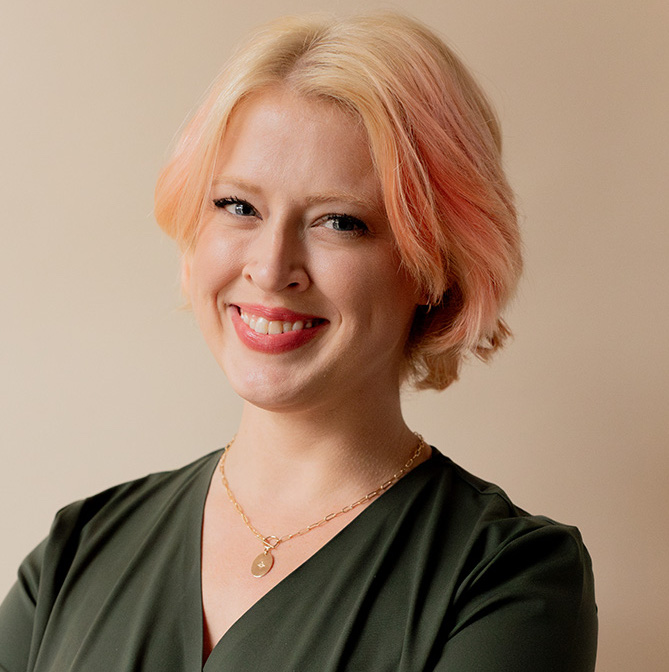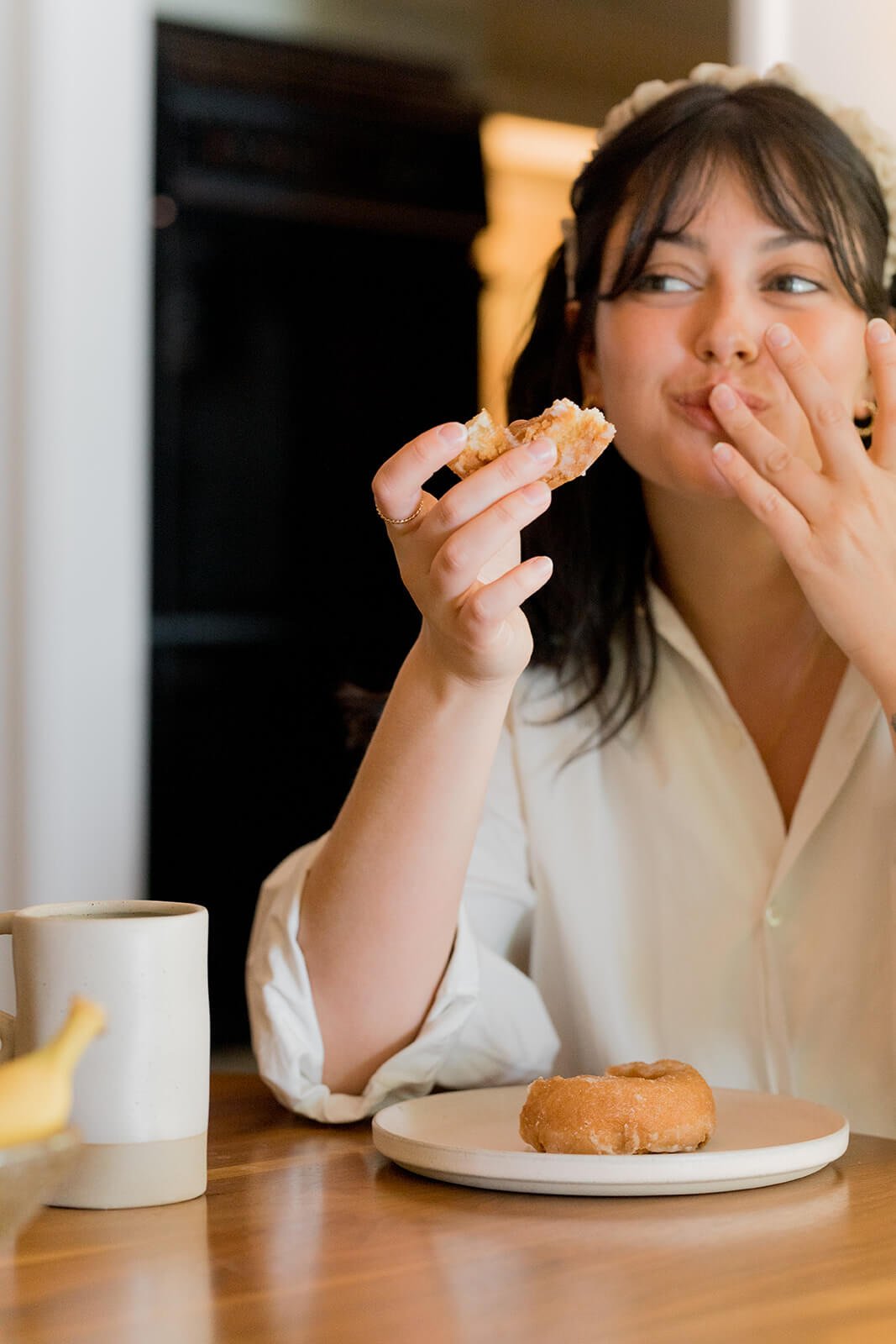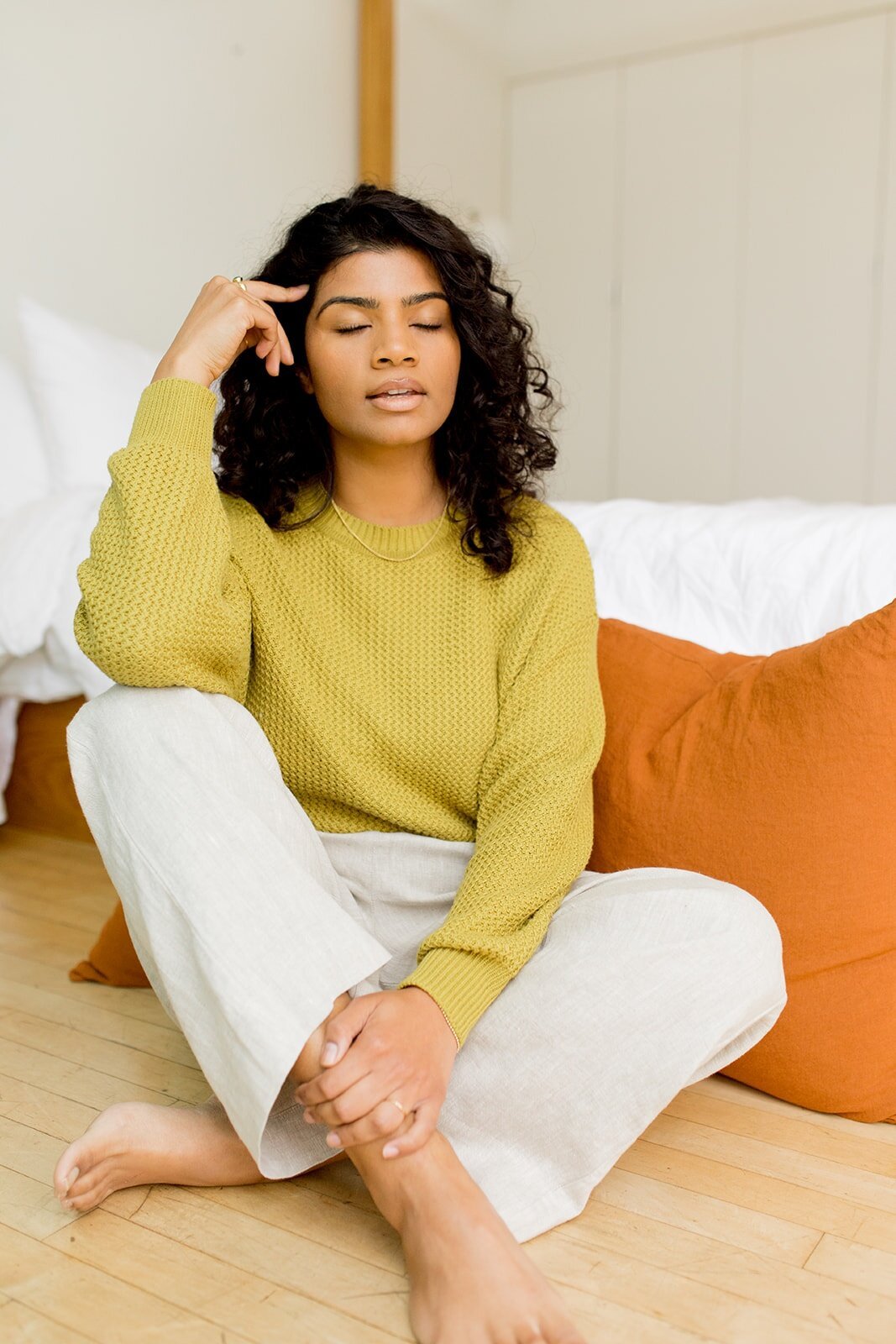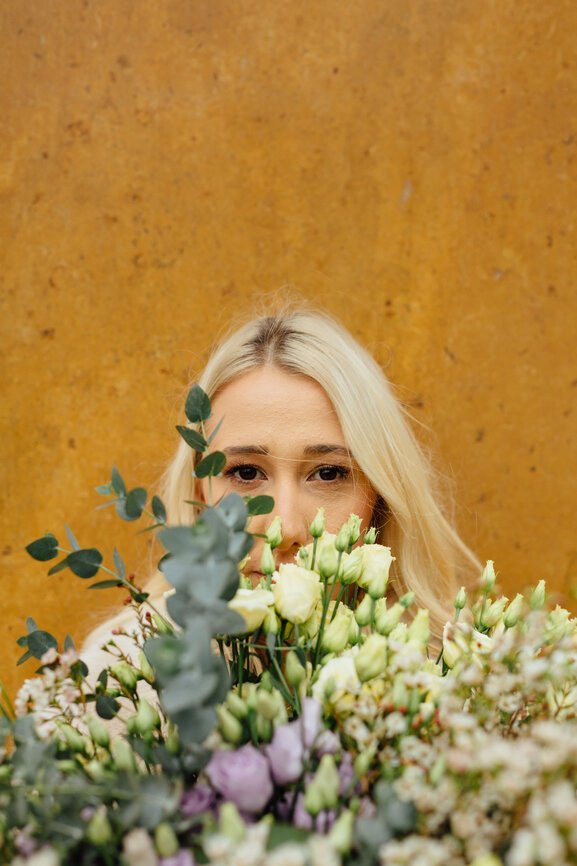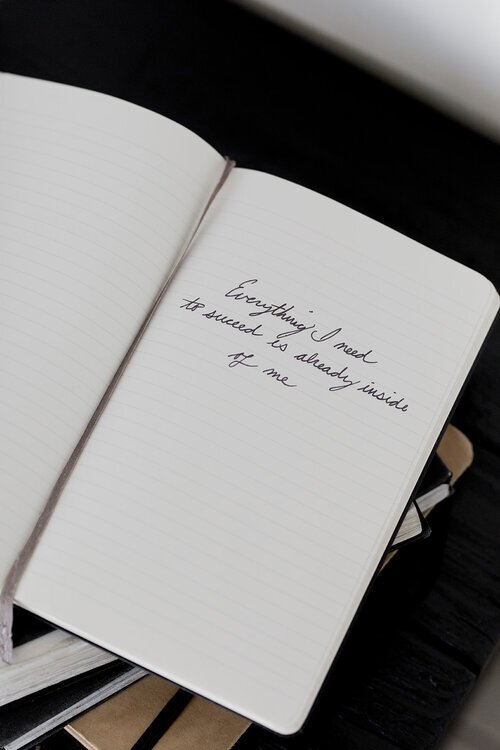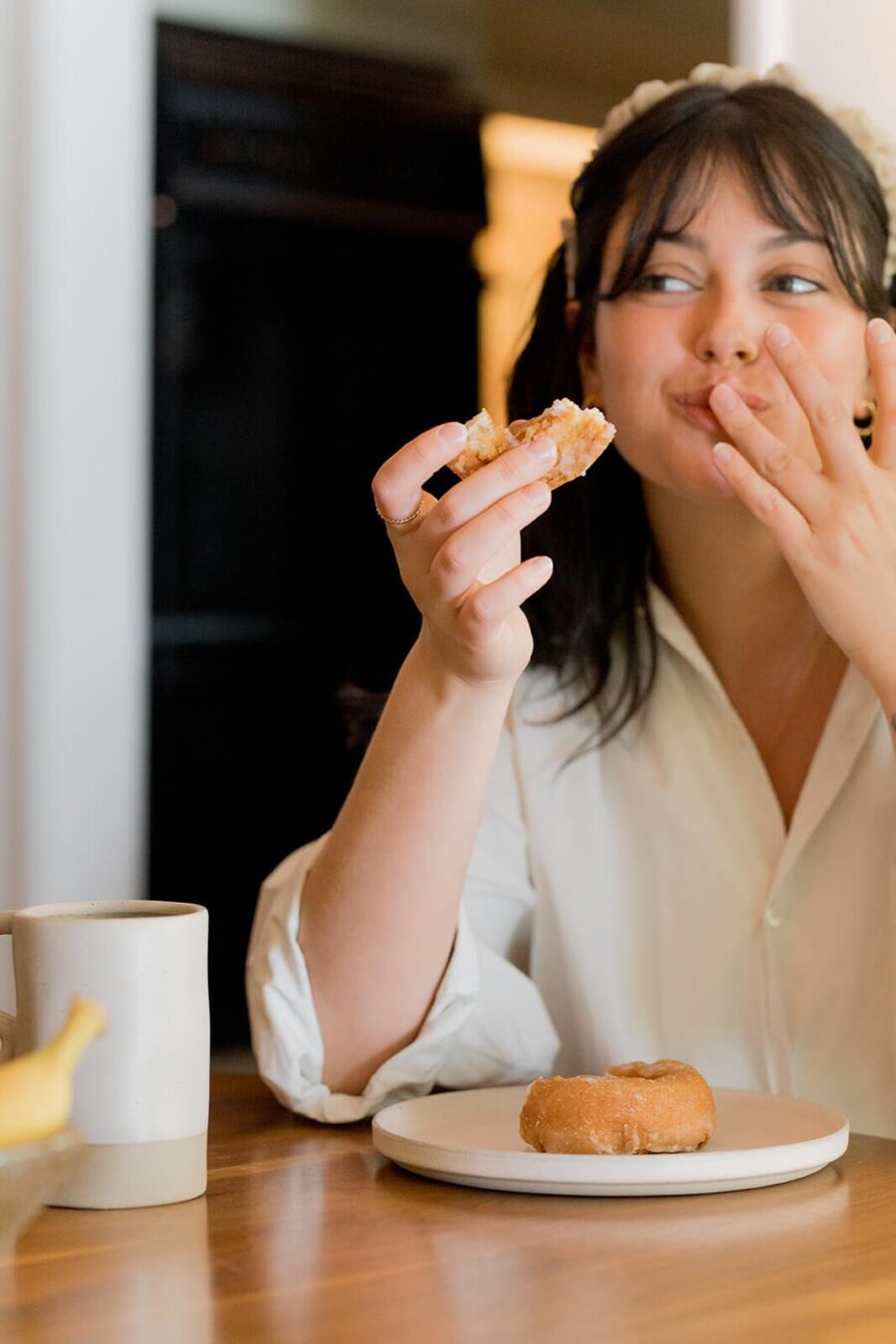
The Trouble With Trying To Become “That Girl”
It’s 5:59 a.m.
When the numbers on the clock flip to 6:00 a.m., a young woman in an oversized t-shirt stretches her arms in the air in front of a wall of windows. A panorama of a city skyline sprawls below her fingertips. The sun is shining, her plants are thriving, and even the messy bun and the pile of cream linen bedding maintain a sense of minimalist elegance. She cracks open a fresh leather-bound journal and begins to document her feelings, sipping on warm lemon water.
“She is “that girl,” and I want to be her. Or at least the algorithm says I do.”
She is “that girl,” and I want to be her. Or at least the algorithm says I do.
That girl is a trending aesthetic—parading as a lifestyle—that’s made its way around Instagram, Pinterest, and TikTok. When I first saw it, I was enchanted. There’s so much control, discipline, and intention behind each element of her morning routine. (Who wouldn’t want a non-clumpy smoothie or a closet full of matching, pressed (pressed!) yoga sets?) And, of course, who among us wouldn’t be taken by the idea that control, in 2022, is in our own hands?
So I bought lemons. I bought hand weights (that girl embraces morning movement). And I bought the nail polish in beige and baby pink so I could look put together. I even set the alarm for 6:30 a.m.—a respectable, though not “ideal” that girl time—and imagined myself glowing in the morning sun on the planned pre-work walk, sipping on a dalgona coffee with some sort of luxurious nut milk and wearing a matching yoga set.
But as my feed—and my life—became more devoted to that girl, my own morning routines lost their sparkle. Instead of a prompt and coordinated wake-up, I scrolled TikTok until 7:45 a.m. My feet were clumsy and sweaty (how?) when I tucked them into my old slippers, put on my pink fluffy polyester robe, and wandered to the kitchen to scoop cheap coffee into the Mr. Coffee. Instead of movement, I curled up on the floor by my rabbits and listened to NPR, took my anti-depressants, and doodled some simple flowers on a piece of junk mail and called it journaling.
Ultimately the lemons went bad, the hand weights became paperweights, and my nail polish chipped. I had bought, bought, and bought, like there was a price tag on becoming a full person. And it wasn’t working.
That’s when it really dawned on me: I failed at being that girl because I’m this girl.
“That’s when it really dawned on me: I failed at being that girl because I’m this girl.”
Even in seemingly harmless video trends, social media messages have a way of telling us that we shouldn’t want to be the way we already are. That’s the trap of becoming that girl—it can appear like it’s the only path to self-improvement. It’s a measuring stick that tells us that in order to be well, we must follow this formula; we must look this way. To be happy, we have to be edited. But there is no edit menu in real life.
“It’s okay to want quiet mornings. It’s okay to want routine. It’s okay to want, to aspire.”
To put it simply, becoming that girl looks like it’s about feeling content, but it’s actually about making content.
It’s not all bad; I can’t argue that. The whole concept is steeped in toxic positivity, but it’s also an escape that so many of us need right now. That girl isn’t interrupted by a grumpy child, a messy partner, or a stack of bills higher than her organic peanut butter toast. That girl exists as a mirage of longing, and it’s okay to want something different. It’s okay to want quiet mornings. It’s okay to want routine. It’s okay to want, to aspire.
Here’s the trouble, though. When we start assigning moral weight to things like 6 a.m. wake-up calls, staying off social media, and perfect bed linens, our attention shifts from knowing what is good for us towards thinking that someone else on the internet knows better. Maybe those things are our needs, but maybe they aren’t. It makes every time we sleep in until 9 p.m. a failure and turns every missed journal opportunity into defeat. That doesn’t seem like self-care anymore.
It also becomes a conversation of resources and privilege. Do you have three uninterrupted hours to yourself each morning? A Vitamix? Access to fresh farmer’s market veggies for making a gorgeous salad with homemade tahini dressing? Do you have, and I mean does anyone have, the accuracy of that girl when it comes to cutting into an avocado at the perfect moment of ripeness?
It also doesn’t take an internet sleuth to identify—that girl is also most often young, white, and thin, making her inaccessible to many people consuming her content.
“We all need to practice a little more ‘good for her, and good for me too’ in our lives, and this is no exception.”
It’s okay to be inspired by internet trends (remember chevrons?), but your participation is optional and scalable. Listen, if you are that girl and it’s working for you, I am proud of you. Keep going. But if you aren’t that girl, I’m proud of you, too. We all need to practice a little more “good for her, and good for me too” in our lives, and this is no exception.
Because ultimately, our individual wellness isn’t an aesthetic. Don’t get caught up in the way that someone else’s morning routine fits neatly into 60 seconds on an app full of dancing grandmas and makeup tutorials because it’s all part of the show. Being our true and best selves doesn’t need to be documented to be real, and self-care is still self-care if no one sees it.
As for me, I have adopted some of the that girl routine, sitting in the quiet sunlight each morning and practicing gratitude. Sometimes I’ll make my bed, and sometimes I’ll drop a lemon slice into my water for good measure. And as I do that, I say a little something like a prayer to myself—this is for me, not for someone else’s consumption. I don’t have to worry about how the lighting looks on camera, only the light I view myself in. I can look around at the morning sun on my cluttered coffee table, take in the sounds of an unromanticized city, and wipe the sleep from my eyes.
This is my way of being, and I’m okay with that.
“I don’t have to worry about how the lighting looks on camera, only the light I view myself in.”
Emily Torres is the Editorial Director at The Good Trade. Born and raised in Indiana, she studied Creative Writing and Business at Indiana University. You can usually find her in her colorful Los Angeles apartment journaling, caring for her rabbits, or gaming.
RELATED READING
Featured image includes model Shelly Cochrane wearing shirt by Comme Des Garcons (vintage); headband by Hair of the Dog; jewelry by Apse
